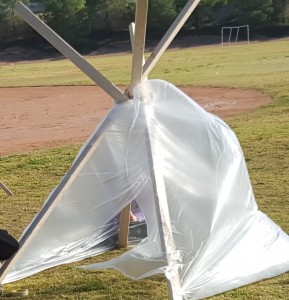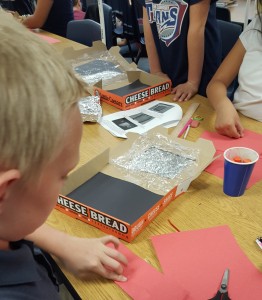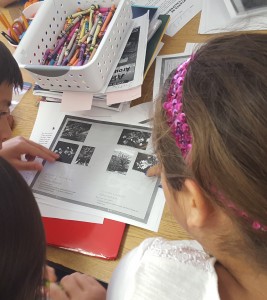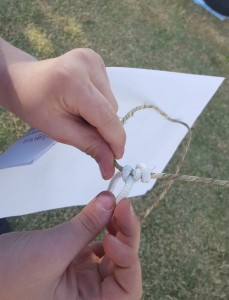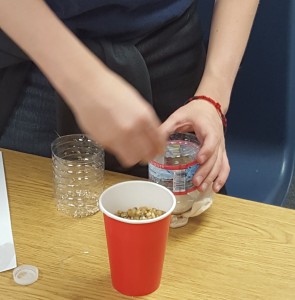Survival Week has been a blast. My fifth graders just finished reading The Cay and as their culminating activity all 35 students in my GATE class got to build solar ovens, create shelters, classify real plants using a field guide, tie knots, and construct water filters. These projects were so much fun and allowed my kids to experience what Philip went through in the novel. In addition, they continue to develop their problem solving, critical thinking, communication, and interpersonal skills.
Shelters
By far, constructing shelters was the class favorite. I gave each group 4 pieces of wood, 3 feet of rope, masking tape, and a plastic tarp. Only one group successful completed the challenge, but it was so much fun to watch everyone problem solve and adjust their designs to create the most stable shelter possible.
Solar Ovens
The other favorite was making solar ovens. I provided each group with directions, a pizza box, plastic wrap, tin foil, scissors, black and red construction paper, and a Popsicle stick. After groups made their solar ovens, it was time to test them out by making SMORES! Students couldn’t believe that the ovens actually worked (especially since it was only 50 degrees outside).
Classifying Plants
Students worked in their groups to identify plants using a field guide. I found this great guide and went out one Saturday and collected ten of the plants from the book. I then put each of the plants into a ziplock bag and numbered it. Students looked at the pictures and descriptions in the guide to classify them. This proved to be very hard for my class. Three groups were able to successfully match 7 of them and all the other groups only matched 4 or less. I loved this activity because students had to pay very careful attention to detail and the answer was not always obvious!
Tying Knots
I found the Boy Scout Knot Tying Guide and made a copy for each of my students and gave them two feet of tope. Students had to use the guide to tie as many knots as possible in 20 minutes. I wasn’t sure if they were going to like this station as much as the others, but everyone had a great time!
Water Filters
The final rotation was to the water filter station. Each student was given directions, cheesecloth, sand, gravel, plastic water bottle, rubber band, and a pair of scissors. Once students believed they had successful built a water filter, they came me to get a cup of dirty water (potting soil mixed with water). Some kiddos struggled but they eventually made adjustments when they saw their peers successfully complete their filters. All of the filters worked great!
I will definitely be doing this project again next year!



